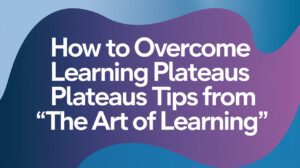In our quest for a healthier lifestyle, we often come across the term “balanced diet” in countless articles, advertisements, and health recommendations. But what does this phrase actually entail? Are there specific guidelines we should follow, or is it just another buzzword in the wellness industry? Let’s dive deep into what a balanced diet truly means and how you can achieve it.
What Is a Balanced Diet?
At its core, a balanced diet is all about providing your body with the essential nutrients it needs to function optimally. This concept isn’t just about counting calories or avoiding certain foods; it’s about ensuring your body receives the right proportion of nutrients from various food groups. The goal is to support overall health, maintain energy levels, and reduce the risk of chronic diseases.
The Key Components of a Balanced Diet
To understand a balanced diet better, let’s break it down into its fundamental components. Each of these elements plays a crucial role in maintaining health and well-being.
1. Macronutrients: The Big Three
Macronutrients are nutrients that your body needs in large amounts: carbohydrates, proteins, and fats. Each of these has a specific role in maintaining health.
- Carbohydrates: Often misunderstood, carbohydrates are the body’s primary source of energy. They are found in foods like grains, fruits, vegetables, and legumes. Opt for complex carbohydrates such as whole grains, which provide sustained energy and are rich in fiber.
- Proteins: Proteins are essential for growth, repair, and maintenance of tissues. They are made up of amino acids, some of which are essential and must be obtained through your diet. Good sources include lean meats, fish, eggs, dairy products, and plant-based options like beans and tofu.
- Fats: Fats are crucial for absorbing certain vitamins, providing energy, and protecting your organs. However, not all fats are created equal. Focus on unsaturated fats found in nuts, seeds, avocados, and olive oil while limiting saturated fats and avoiding trans fats.
2. Micronutrients: The Small but Mighty
Micronutrients, including vitamins and minerals, are needed in smaller amounts but are equally important for health. They help in various bodily functions such as immune response, bone health, and energy production.
- Vitamins: These are organic compounds that support processes like vision, skin health, and immune function. Key vitamins include A, C, D, E, and the B-complex vitamins. Fresh fruits, vegetables, dairy products, and fortified cereals are excellent sources.
- Minerals: Minerals like calcium, iron, potassium, and magnesium are vital for functions ranging from bone health to muscle contraction. Foods rich in minerals include dairy products, leafy greens, nuts, seeds, and whole grains.
3. Water: The Essential Hydrator
Water is often overlooked but is critical for almost every bodily function. It aids in digestion, nutrient absorption, and temperature regulation. Aim to drink at least 8 cups (2 liters) of water per day, and more if you are physically active or in a hot climate.
Creating a Balanced Plate
One practical way to ensure you’re getting a balanced diet is to visualize your plate. Aim to fill half of your plate with vegetables and fruits, one-quarter with lean proteins, and one-quarter with whole grains. Here’s how you can apply this principle:
- Vegetables and Fruits: Incorporate a variety of colors and types. Vegetables like spinach, carrots, and bell peppers provide different vitamins and minerals. Fruits such as berries, apples, and oranges offer essential nutrients and antioxidants.
- Proteins: Choose a mix of animal and plant-based proteins. For instance, chicken, fish, tofu, and lentils can provide the necessary amino acids.
- Whole Grains: Opt for brown rice, quinoa, and whole-wheat products over refined grains. These provide more fiber, which aids in digestion and helps keep you full longer.

Practical Tips for a Balanced Diet
Achieving a balanced diet doesn’t mean overhauling your entire eating routine overnight. Here are some practical tips to help you get started:
1. Plan Your Meals
Meal planning can help ensure you’re getting a variety of nutrients. Spend some time each week deciding what meals and snacks you’ll prepare. This will help you make healthier choices and avoid the temptation of grabbing convenience foods that are often less balanced.
2. Cook at Home
Preparing meals at home gives you control over the ingredients and portion sizes. Experiment with new recipes that incorporate a range of nutrients. Cooking also allows you to cut down on added sugars, unhealthy fats, and excessive sodium found in many processed foods.
3. Listen to Your Body
Pay attention to hunger and fullness cues. Eating mindfully can help you avoid overeating and ensure you’re enjoying your food. It’s also important to recognize when you’re craving certain foods and understand whether it’s physical hunger or emotional eating.
4. Be Flexible
A balanced diet doesn’t mean you have to be perfect. Allow yourself occasional treats and indulge in moderation. The key is consistency over time, not perfection in every meal.
5. Stay Informed
Nutritional science is constantly evolving, so staying informed about new research can help you make better choices. However, it’s important to seek information from reputable sources and avoid fad diets or extreme recommendations.

Common Misconceptions About a Balanced Diet
Understanding what a balanced diet truly means can help dispel some common misconceptions:
- You Don’t Have to Avoid All Unhealthy Foods: A balanced diet is not about depriving yourself but about moderation and making healthier choices more often.
- Not All Carbs Are Bad: Carbohydrates are an essential part of a balanced diet. It’s the type of carbs that matter—opt for whole grains over refined sugars.
- Fats Are Not the Enemy: Healthy fats are important and should be included in your diet. Focus on sources like avocados, nuts, and olive oil.
Conclusion
A balanced diet is a foundational aspect of a healthy lifestyle. It’s about more than just choosing the right foods; it’s about creating a varied and nutritious eating pattern that supports your overall well-being. By understanding and applying the principles of a balanced diet, you can nourish your body, enjoy your meals, and maintain your health for the long haul.
Remember, achieving balance in your diet is a journey, not a destination. Start small, make gradual changes, and listen to your body’s needs. With time and practice, a balanced diet can become a natural and enjoyable part of your life.






